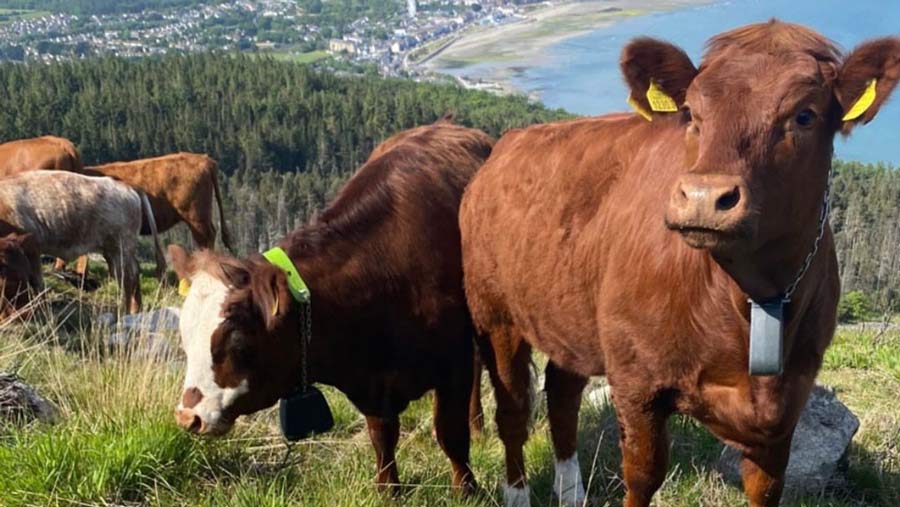Grazing cattle to restore Mourne Mountains after fire damage
 Luing cows on Mourne Mountains © National Trust
Luing cows on Mourne Mountains © National Trust A small herd of traditional Luing cattle is to be introduced to Northern Ireland’s Mourne Mountains in a bid to restore wildlife following a devastating fire.
The mountains were ravaged by one of the largest fires recorded in Northern Ireland back in 2021, devastating almost 300ha and affecting the mountains’ highest peak, Slieve Donard.
The National Trust has since been trialling methods to rejuvenate the land and restore plants and wildlife that had once habited there, such as the Irish hare and several rare plant species.
See also: Fertiliser manufacturer fined £500k for polluting river
The newest initiative involves the introduction of traditional Luing cattle.
Working with a local tenant farmer, six will be brought to the mountain to trample bracken and graze the purple moor-grass that has grown since the fire, making space for native plants and heather to return.
Kevin Duncan, land use and farming adviser at the National Trust in Northern Ireland said: “Our farmer has spent a long time researching a suitable breed of animal for the job, one that is hardy enough to deliver conservation grazing in this upland environment while still producing good beef calves for the market.
“The hardy Luing cow was the breed of choice, which is adept at conservation grazing in the uplands due to their highland heritage.
“It isn’t a fussy browser and will chomp down rank grasses such as purple moor-grass, unlike sheep which are more selective.”
Virtual fence
Wearing special GPS collars, the cattle will be tracked and “virtual fences” will be created, so that their grazing can be targeted to particular areas of the mountain without the need for physical fences.
Tenant farmer John Maginn said: “The collars have been shown to be a great example of where we can use advancing technologies to aid day-to-day livestock management, increasing animal husbandry by being able to monitor livestock virtually while aiding the cattle to deliver the required conservation management in this ionic landscape.
“Initial training of the cattle has shown them to be fast learners of the audio signals. This has given me great confidence in trialling this innovative technology and I am very encouraged for the wider positive implications it could have for the farming sector to aid grazing management.”
